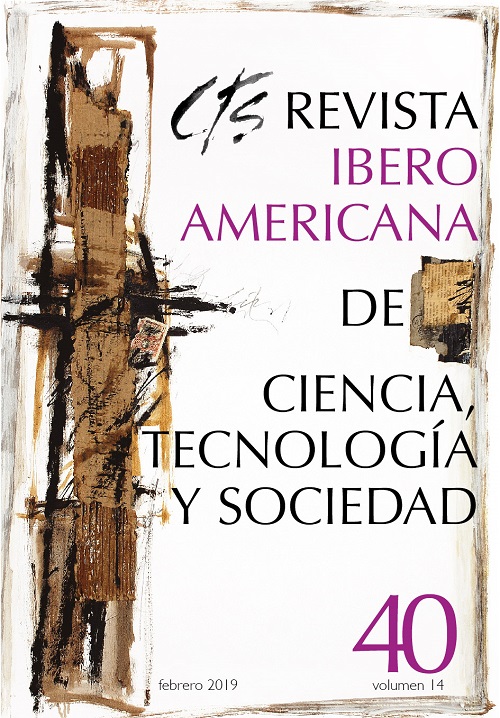Space Economy and Development. The Argentine Case
Keywords:
space economy, telecommunications, satellites, ArgentinaAbstract
Argentina has entered the exclusive club of countries capable of designing and manufacturing its own observation and telecommunication satellites, and is close to being able to build its own launch vehicles. This paper explores the history and perspectives of the “space economy” in Argentina, in large measure a “daughter” of previous development in its nuclear industry, within a context in which several new processes seem to open new technological and market horizons for the space industry at a global scale. Public policy has been efficient with regard to the development of technologically successful missions. Here we are interested in understanding the determinant factors of these successes, as well as evaluating to what degree they have helped create the type of externalities that are supposed to be produced by the space industry and to develop an associated market of goods and services. Finally, we suggest an agenda of policies and research based on these subjects.Downloads
References
BLINDER, D. (2012): “Tecnología misilística y sus usos duales: aproximaciones políticas entre la ciencia y las Relaciones Internacionales en el caso del V2 alemán y el Cóndor II argentino”, Revista Iberoamericana de Ciencia, Tecnología y Sociedad - CTS, vol. 6, n° 18, pp. 9-33.
BLINDER, D. (2015): “Hacia una política espacial en la Argentina”, Revista Iberoamericana de Ciencia, Tecnología y Sociedad - CTS, vol. 10, n° 29, pp. 65-89.
DOSI, G. (1988): “Sources, procedures, and microeconomic effects of innovation”, Journal of economic literature, vol. 26, pp. 1120-1171.
DREWES, L. (2014): El sector espacial argentino: Instituciones referentes, proveedores y desafíos, Benavides, ARSAT - Empresa Argentina de Soluciones Satelitales.
ENACOM (2016): Ente Nacional de Comunicaciones. Disponible en:
https://www.enacom.gob.ar/. Consultado el 6 de diciembre de 2016.
HIDALGO, C. A. y HAUSMANN, R. (2009): “The building blocks of economic complexity”, Proceedings of the national academy of sciences, vol. 106, n° 26, pp. 10570-10575.
LÓPEZ, A., PASCUINI, P. y RAMOS, A. (2017): “Al infinito y más allá: una exploración sobre la economía del espacio en Argentina”, documento de trabajo n° 17, Instituto Interdisciplinario de Economía Política BAIRES (UBA-CONICET), pp 1-61.
MINISTERIO DE CIENCIA, TECNOLOGÍA E INNOVACIÓN PRODUCTIVA (2015): Indicadores de Ciencia y Tecnología Argentina 2013. Disponible en: http://www.mincyt.gob.ar/indicadores/indicadores-de-ciencia-y-tecnologia-argentina2013-11318. Consultado el 26 de enero de 2017.
OECD (2012): OECD Handbook on Measuring the Space Economy, París, OECD Publishing.
OECD (2014): The Space Economy at a Glance 2014, París, OECD Publishing.
PIETROBELLI, C. y RABELLOTTI, R. (2004): “Upgrading in clusters and value chains in Latin America: the role of policies”, Inter-American Development Bank: Sustainable Development Department Best Practices Series, Washington DC, Inter-American Development Bank, pp 1-106.
STEFANI, F. D. (2016): Grupo de nanoFísica Aplicada del Departamento de Física de la Universidad de Buenos Aires. Disponible en: http://www.nano.df.uba.ar/wordpress/wp-content/uploads/Informe-evolucion-presupuesto-MINCYT.pdf. Consultado el 6 de diciembre de 2016.
Downloads
Published
How to Cite
Issue
Section
License
All CTS's issues and academic articles are under a CC-BY license.
Since 2007, CTS has provided open and free access to all its contents, including the complete archive of its quarterly edition and the different products presented in its electronic platform. This decision is based on the belief that offering free access to published materials helps to build a greater and better exchange of knowledge.
In turn, for the quarterly edition, CTS allows institutional and thematic repositories, as well as personal web pages, to self-archive articles in their post-print or editorial version, immediately after the publication of the final version of each issue and under the condition that a link to the original source will be incorporated into the self-archive.











